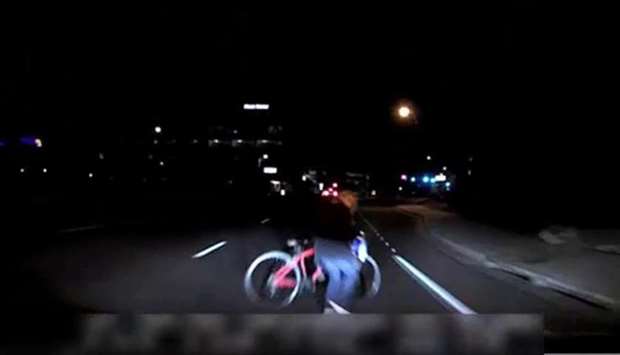An Uber self-driving vehicle that struck and killed a woman in Arizona in March failed to identify the pedestrian or to brake, raising serious questions about its performance, the US National Transportation Safety Board said in a preliminary report released on Thursday.
The report said the vehicle's radar systems observed the pedestrian six seconds before impact but ‘the self-driving system software classified the pedestrian as an unknown object, as a vehicle, and then as a bicycle.’
At 1.3 seconds before impact, the self-driving system determined emergency braking was needed, but Uber said emergency braking maneuvers were not enabled while the vehicle was under computer control in order to reduce the potential for erratic vehicle behavior.
Uber Technologies Inc, which suspended testing in the aftermath of the crash in the city of Tempe - the first death ever from a fully self-driving vehicle - said on Wednesday it would shut down its Arizona self-driving testing program and will focus on limited testing in Pittsburgh and two cities in California.
The company did not directly comment on the NTSB findings but noted that it recently named a former NTSB chairman, Christopher Hart, to advise on Uber's safety culture.
‘As their investigation continues, we’ve initiated our own safety review of our self-driving vehicles program,’ the company said on Thursday, adding it planned to announce changes in the coming weeks.
The ride-hailing company aims to resume self-driving operations this summer, likely with smaller routes and fewer cars, the company said on Wednesday.
Uber has said it considers self-driving technology important to the future of its ride services, although it is not clear how it fits into the plans of new Chief Executive Dara Khosrowshahi. He has revamped the company structure and cut certain expenses as Uber prepares for an initial public offering next year.
Elaine Herzberg, 49, was walking her bicycle outside the crosswalk on a four-lane road when she was struck by the Uber vehicle traveling at about 40 miles (64 km) per hour.
A safety operator behind the wheel appeared to be looking down, and not at the road, moments before the crash, according to video from inside the car released by police. The operator told the NTSB she was not looking at a mobile phone but monitoring the vehicle's self-driving systems.
NTSB said the Uber vehicle required the operator to intervene and take action, but the system is not designed to alert the operator. The report said the operator engaged the steering wheel less than a second before impact and began braking less than a second after impact.
The report noted that Herzberg tested positive for methamphetamine and marijuana, and that she did not look in the direction of the vehicle until just before impact.

